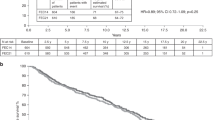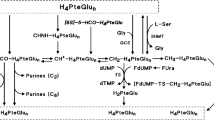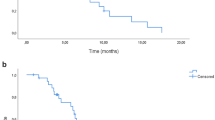Abstract
Prolonged infusions of 5-fluorouracil (5-FU) have been used since the early 1960s, but recently there has been a major resurgence of interest, partly because of the advent of electronically controlled portable infusion pumps. This paper looks at the published data on continuously infused 5-FU in breast cancer. As a single agent, bolus 5-FU has a response rate of around 25%; this includes many patients in older series who were chemotherapy naive. The overall response rate across all the studies with continuously infused 5-FU is 29%. However, the majority of these patients were heavily pretreated, and response rates of up to 54% have been reported. What is more encouraging is the response rate in combination chemotherapy--even for pretreated patients with metastatic disease, response rates up to 89% have been found. However, this level of benefit brings a new toxicity--palmar--plantar erythrodysaesthesia; and of course myelotoxicity still remains a problem in the combination regimens. Randomised trials to assess the role of infusional 5-FU are now indicated.
This is a preview of subscription content, access via your institution
Access options
Subscribe to this journal
Receive 24 print issues and online access
$259.00 per year
only $10.79 per issue
Buy this article
- Purchase on Springer Link
- Instant access to full article PDF
Prices may be subject to local taxes which are calculated during checkout
Similar content being viewed by others
Author information
Authors and Affiliations
Rights and permissions
About this article
Cite this article
Cameron, D., Gabra, H. & Leonard, R. Continuous 5-fluorouracil in the treatment of breast cancer. Br J Cancer 70, 120–124 (1994). https://doi.org/10.1038/bjc.1994.259
Issue Date:
DOI: https://doi.org/10.1038/bjc.1994.259
This article is cited by
-
A peptide derived from interleukin-10 exhibits potential anticancer activity and can facilitate cell targeting of gold nanoparticles loaded with anticancer therapeutics
Communications Chemistry (2023)
-
5-Fluorouracil treatment induces characteristic T>G mutations in human cancer
Nature Communications (2019)
-
Emerging ways to treat breast cancer: will promises be met?
Cellular Oncology (2018)
-
Copper solid amalgam electrode as a simple and sensitive tool for voltammetric determination of the antineoplastic drug 5-fluorouracil in pharmaceuticals
Chemical Papers (2017)
-
Synergistic Effect of Cold Atmospheric Plasma and Drug Loaded Core-shell Nanoparticles on Inhibiting Breast Cancer Cell Growth
Scientific Reports (2016)



